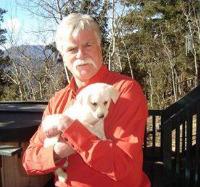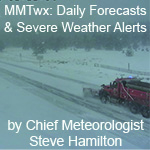- Posts: 15745
- Thank you received: 320
Science Odds and Ends
- ScienceChic
-
 Topic Author
Topic Author
- Mountain Champion
-

http://www.sciencemag.org/content/331/6019/837.full
Growth Defect Blocks Cancer and Diabetes
Science 18 February 2011:
Vol. 331 no. 6019 p. 837
DOI: 10.1126/science.331.6019.837
The paper (pay-per-access): http://stm.sciencemag.org/content/3/70/70ra13.abstractLife can be treacherous for Ecuadorians with Laron syndrome, a rare type of dwarfism. As children, they are vulnerable infectious diseases. As adults, they are prone to fatal accidents, such as falls on stairs that aren't sized for their short legs. But a new study shows that these people, who carry a genetic defect that prevents them from responding to growth hormone, are almost exempt from cancer and diabetes. The paper solidifies a link researchers have long suspected from animal studies and suggests that dialing down the growth-controlling molecular pathways might protect healthy adults from these diseases.
The scientists analyzed medical information for the 99 subjects Guevara-Aguirre has been tracking, for another 53 Laron patients who died before 1988, and for more than 1600 relatives who didn't have the condition. Only one of the Laron subjects developed cancer, an ovarian tumor that didn't recur after chemotherapy. By contrast, cancer killed 20% of the normal-sized relatives. The Laron syndrome individuals were also free of type 2 diabetes, the cause of death for 5% of their taller kin, the team reported in the 16 February issue of Science Translational Medicine.
The diabetes result was surprising because Laron syndrome often causes obesity, a risk factor for diabetes. But the researchers found that the subjects, like the minimice, had lower blood insulin levels and much higher sensitivity to the hormone than did controls. Scientists haven't worked out exactly how GH prompts diabetes. But Longo and colleagues did identify a possible mechanism for the Laron subjects' cancer resistance. GH rouses another hormone, insulin-like growth factor-1 (IGF-1), and researchers think that both molecules promote cancer. Adding IGF-1 to the serum from the Laron group cut the amount of cell suicide to control levels, possibly increasing cancer susceptibility.
Growth Hormone Receptor Deficiency Is Associated with a Major Reduction in Pro-Aging Signaling, Cancer, and Diabetes in Humans
Sci Transl Med 16 February 2011: 70ra13.
More general, random info:
http://www.sciencemag.org/content/331/6019/906.full
Hibernation in Black Bears: Independence of Metabolic Suppression from Body Temperature
Science 18 February 2011:
Vol. 331 no. 6019 pp. 906-909
DOI: 10.1126/science.1199435
Black bears hibernate for 5 to 7 months a year and, during this time, do not eat, drink, urinate, or defecate. We measured metabolic rate and body temperature in hibernating black bears and found that they suppress metabolism to 25% of basal rates while regulating body temperature from 30° to 36°C, in multiday cycles. Heart rates were reduced from 55 to as few as 9 beats per minute, with profound sinus arrhythmia. After returning to normal body temperature and emerging from dens, bears maintained a reduced metabolic rate for up to 3 weeks. The pronounced reduction and delayed recovery of metabolic rate in hibernating bears suggest that the majority of metabolic suppression during hibernation is independent of lowered body temperature.
Hibernating black bears kept a curled posture (Fig. 1), similar to that previously described (13), that facilitates heat preservation and water economy. Animals changed position twice a day to once every 2 days, when they stood, occasionally groomed, and rearranged bedding material.
Insights into how hibernating bears achieve and cope with these reductions in energy need and Tb, as well as conservation of muscle (27, 28) and bone mass (29) despite prolonged seasonal inactivity and disuse, could lead to the development of novel clinical therapies.
"Now, more than ever, the illusions of division threaten our very existence. We all know the truth: more connects us than separates us. But in times of crisis the wise build bridges, while the foolish build barriers. We must find a way to look after one another as if we were one single tribe.” -King T'Challa, Black Panther
The truth is incontrovertible. Malice may attack it. ignorance may deride it, but in the end, there it is. ~Winston Churchill
Please Log in or Create an account to join the conversation.
- cajun
-

- Tourist
-

- Posts: 11
- Thank you received: 0
Science Chic wrote: This is why money is needed for basic research.
More general, random info:
http://www.sciencemag.org/content/331/6019/906.full
Hibernation in Black Bears: Independence of Metabolic Suppression from Body Temperature
Science 18 February 2011:
Vol. 331 no. 6019 pp. 906-909
DOI: 10.1126/science.1199435Black bears hibernate for 5 to 7 months a year and, during this time, do not eat, drink, urinate, or defecate. We measured metabolic rate and body temperature in hibernating black bears and found that they suppress metabolism to 25% of basal rates while regulating body temperature from 30° to 36°C, in multiday cycles. Heart rates were reduced from 55 to as few as 9 beats per minute, with profound sinus arrhythmia. After returning to normal body temperature and emerging from dens, bears maintained a reduced metabolic rate for up to 3 weeks. The pronounced reduction and delayed recovery of metabolic rate in hibernating bears suggest that the majority of metabolic suppression during hibernation is independent of lowered body temperature.
Hibernating black bears kept a curled posture (Fig. 1), similar to that previously described (13), that facilitates heat preservation and water economy. Animals changed position twice a day to once every 2 days, when they stood, occasionally groomed, and rearranged bedding material.
Insights into how hibernating bears achieve and cope with these reductions in energy need and Tb, as well as conservation of muscle (27, 28) and bone mass (29) despite prolonged seasonal inactivity and disuse, could lead to the development of novel clinical therapies.
I heard about this on the radio this morning. One of the other interesting possibilities for this research is for long range space missions. Until we develop the warp drive lol
Please Log in or Create an account to join the conversation.
- ScienceChic
-
 Topic Author
Topic Author
- Mountain Champion
-

- Posts: 15745
- Thank you received: 320
http://www.aaas.org/meetings/2011/progr ... ures_block
This has links to videos and power point presentations of the plenary lectures and the AAAS President's address.
http://news.sciencemag.org/sciencenow/
21 February 2011 | ScienceNOW(Science - AAAS)
Hot Off the Presses, New Skin for Burn Victims
by Sara Reardon
Bioprinters use inkjet technology to repair burns and grow organs
http://news.sciencemag.org/sciencenow/2 ... tml?ref=hp
21 February 2011 | ScienceNOW(Science - AAAS)
Seaweed a Source of Potential Antimalarial Drug
by Elizabeth Pennisi
Compound thwarts malarial parasite in red blood cell
http://news.sciencemag.org/sciencenow/2 ... tml?ref=hp
21 February 2011 | ScienceNOW(Science - AAAS)
Podcast: Using Thoughts to Control Robots
by Sara Reardon
Science reporter Sara Reardon explores brain-machine interfaces
http://news.sciencemag.org/sciencenow/2 ... tml?ref=hp
21 February 2011 | ScienceNOW(Science - AAAS)
Live @ AAAS - Ian Baldwin on 'Talking Trees' (Transcript)
by Elizabeth Pennisi
Ian Baldwin will discuss his studies of how plants use chemical signals to fend off hungry insects or attract helpful pollinators
http://news.sciencemag.org/sciencenow/2 ... tml?ref=hp
21 February 2011 | ScienceNOW(Science - AAAS)
Live @ AAAS - Samantha Joye on BP Oilspill Impact (Transcript)
by Erik Stokstad
At 11 a.m. EST on Monday, 21 February, Live @ AAAS will host a live chat here with Samantha Joye, who has tracked the oil and gas released by...
http://news.sciencemag.org/sciencenow/2 ... tml?ref=hp
21 February 2011 | ScienceNOW(Science - AAAS)
Ancient Mutation to Blame for Stuttering
by Cassandra Willyard
Genetic analysis suggests new therapies, new avenues of research
http://news.sciencemag.org/sciencenow/2 ... tml?ref=hp
21 February 2011 | ScienceNOW(Science - AAAS)
Podcast: Your Chemical Exposure. How Much Should You Know?
by Erik Stokstad
Science reporter Erik Stokstad explores the ethics of biomonitoring
http://news.sciencemag.org/sciencenow/2 ... tml?ref=hp
20 February 2011 | ScienceNOW(Science - AAAS)
Podcast: A Global Katrina?
by Robert Coontz
Science deputy news editor Robert Coontz explores extreme space weather
http://news.sciencemag.org/sciencenow/2 ... tml?ref=hp
20 February 2011 | ScienceNOW(Science - AAAS)
Where Do Potato-Sized Diamonds Come From, 10-Year Project Asks
by Eli Kintisch
Geophysical “observatory” puts hundreds of scientists on the trail of carbon in Earth’s depths
http://news.sciencemag.org/sciencenow/2 ... tml?ref=hp
20 February 2011 | ScienceNOW(Science - AAAS)
A Warming World Could Add Billions to Shipping Costs
by Sid Perkins
Climate change will spur the growth of barnacles and other ship-clinging creatures
http://news.sciencemag.org/sciencenow/2 ... tml?ref=hp
20 February 2011 | ScienceNOW(Science - AAAS)
Podcast: International Responses to Climate Change
by Eli Kintisch
Science reporter Eli Kintisch explores why some countries do more than others
http://news.sciencemag.org/sciencenow/2 ... tml?ref=hp
20 February 2011 | ScienceNOW(Science - AAAS)
What Do Worms Have to Do With Asthma?
by Cassandra Willyard
Genetic mutations that protect against worm infection may make individuals more susceptible to asthma
http://news.sciencemag.org/sciencenow/2 ... tml?ref=hp
20 February 2011 | ScienceNOW(Science - AAAS)
Live @ AAAS - Olaf Blanke and Jose del R. Millan on Robotics (Transcript)
by Sara Reardon
Olaf Blanke and Jose del R. Millan discuss research on developing a brain-computer interface system.
http://news.sciencemag.org/sciencenow/2 ... tml?ref=hp
19 February 2011 | ScienceNOW(Science - AAAS)
Methane From Oil Spill Migrating Undigested?
by Erik Stokstad
Microbes may not have eaten all the gas released in the Gulf spill
http://news.sciencemag.org/sciencenow/2 ... tml?ref=hp
19 February 2011 | ScienceNOW(Science - AAAS)
A Post Mortem on the Gulf Oil Spill
by Eli Kintisch
Government asks scientists for damage assessment to restore region
http://news.sciencemag.org/sciencenow/2 ... tml?ref=hp
19 February 2011 | ScienceNOW(Science - AAAS)
Machines That Run on Human Thoughts
by Sara Reardon
Scientists are trying to break down the barriers between mind and machine
http://news.sciencemag.org/sciencenow/2 ... tml?ref=hp
19 February 2011 | ScienceNOW(Science - AAAS)
Podcast: Using Surgery to Treat Psychiatric Disorders
by Sara Reardon
Science reporter Sara Reardon explores the ethics of "deep brain stimulation"
http://news.sciencemag.org/sciencenow/2 ... tml?ref=hp
19 February 2011 | ScienceNOW(Science - AAAS)
Podcast: Will There Be Fish by 2050?
by Erik Stokstad
Science reporter Erik Stokstad explores the fate of the world's oceans
http://news.sciencemag.org/sciencenow/2 ... tml?ref=hp
19 February 2011 | ScienceNOW(Science - AAAS)
Monkey Behavior May Provide Clues to Autism
by Elizabeth Pennisi
Monkeys do best with lots of face time with mom as newborns
http://news.sciencemag.org/sciencenow/2 ... tml?ref=hp
19 February 2011 | ScienceNOW(Science - AAAS)
Live @ AAAS - Tom Kunz on Bats and the Atmosphere (Transcript)
by Elizabeth Pennisi
Tom Kunz will discuss the emerging field of aeroecology
http://news.sciencemag.org/sciencenow/2 ... tml?ref=hp
19 February 2011 | ScienceNOW(Science - AAAS)
Can Science and Religion Get Along?
by Sara Reardon
Panelists try to bridge the gap on issues such as climate change and advances in neuroscience
http://news.sciencemag.org/sciencenow/2 ... tml?ref=hp
18 February 2011 | ScienceNOW(Science - AAAS)
As Tuna Vanish, Sardines Rise
by Erik Stokstad
Small fish are benefiting from the overfishing of predators, but that's not good news
http://news.sciencemag.org/sciencenow/2 ... tml?ref=hp
18 February 2011 | ScienceNOW(Science - AAAS)
Podcast: Does Speaking Two Languages Improve Your Brain?
by Robert Frederick
Science Podcast host Robert Frederick explores the link between language and cognition
http://news.sciencemag.org/sciencenow/2 ... tml?ref=hp
18 February 2011 | ScienceNOW(Science - AAAS)
An Infant's Refined Tongue
by Helen Fields
Bilingual babies can tell the difference between two languages they've never heard before
http://news.sciencemag.org/sciencenow/2 ... tml?ref=hp
18 February 2011 | ScienceNOW(Science - AAAS)
Scientists Use Weather Radar to Track Bats
by Elizabeth Pennisi
Instruments reveal previously hidden bat behaviors
http://news.sciencemag.org/sciencenow/2 ... tml?ref=hp
18 February 2011 | ScienceNOW(Science - AAAS)
Live @ AAAS - Bill Borucki and Sara Seager on Planetary Science (Transcript)
by Yudhijit Bhattacharjee
Sara Seager on the search for planets outside the solar system
http://news.sciencemag.org/sciencenow/2 ... tml?ref=hp
18 February 2011 | ScienceNOW(Science - AAAS)
Podcast: Outcast Planets, Vibrating Odors, and More
by David Grimm and Robert Frederick
Listen to a roundup of some of our favorite stories from this week
http://news.sciencemag.org/sciencenow/2 ... tml?ref=hp
17 February 2011 | ScienceNOW(Science - AAAS)
Want to Fight Global Warming? Don't Just Focus on CO2
by Eli Kintisch
New report argues that targeting methane and soot could slow temperature rise
http://news.sciencemag.org/sciencenow/2 ... tml?ref=hp
17 February 2011 | ScienceNOW(Science - AAAS)
The Secrets of Bear Hibernation
by Sara Reardon
Study yields new insights into how these animals make it through long winters
http://news.sciencemag.org/sciencenow/2 ... tml?ref=hp
17 February 2011 | ScienceNOW(Science - AAAS)
Live @ AAAS - Bill Foster on Electing Scientists to Office (Transcript)
by Eli Kintisch
Bill Foster talks about scientists running for office
http://news.sciencemag.org/sciencenow/2 ... tml?ref=hp
"Now, more than ever, the illusions of division threaten our very existence. We all know the truth: more connects us than separates us. But in times of crisis the wise build bridges, while the foolish build barriers. We must find a way to look after one another as if we were one single tribe.” -King T'Challa, Black Panther
The truth is incontrovertible. Malice may attack it. ignorance may deride it, but in the end, there it is. ~Winston Churchill
Please Log in or Create an account to join the conversation.
- ScienceChic
-
 Topic Author
Topic Author
- Mountain Champion
-

- Posts: 15745
- Thank you received: 320
http://www.nature.com/news/2011/110301/ ... id=FBK_NPG
Epidemiology: Study of a lifetime
In 1946, scientists started tracking thousands of British children born during one cold March week. On their 65th birthday, the study members find themselves more scientifically valuable then ever before.
Helen Pearson
Published online 1 March 2011 | Nature 471, 20-24 (2011) | doi:10.1038/471020a
Throughout the rest of that week, just months after the end of the Second World War, 16,695 babies were born in England, Scotland and Wales. Health visitors carefully recorded the weights of the vast majority on a four-page questionnaire, along with countless other details including the father's occupation, the number of rooms and occupants (including domestics) in the baby's home and whether the baby was legitimate or illegitimate. Over subsequent years, the information files on more than 5,000 of these children thickened, then bulged. Throughout their school years and young adulthood and on into middle age, researchers weighed, measured, prodded, scanned and quizzed the group's bodies and minds in almost every way imaginable.
This week, the group has much to celebrate. They are turning 65, the age at which many in the United Kingdom retire and, as such, a milestone in British life. They will also celebrate being part of the longest-running birth-cohort study in the world. These ordinary men and women are now some of the best-studied people on the planet. And this makes them some of the most scientifically valuable, because it has allowed researchers to track their health and wealth throughout their lives, and to search for factors that could explain their trajectories.
At least one study has hinted at the power of the cohort's life-course data combined with genetics. Last year, Rebecca Hardy, a statistician with the survey, published a study of two hot genes called FTO and MC4R, variants of which have been identified as risk factors for obesity6. When she analysed DNA collected from the cohort in 1999, she found that the association of those variants with body mass index increased in early adult life, then weakened as the cohort grew older. Perhaps, Hardy speculates, any effects of the genes on appetite or fat storage were overwhelmed by that onslaught of fat-promoting influences in the 1980s, a possibility that might become clearer when she tests a further panel of obesity-linked genes.
"Now, more than ever, the illusions of division threaten our very existence. We all know the truth: more connects us than separates us. But in times of crisis the wise build bridges, while the foolish build barriers. We must find a way to look after one another as if we were one single tribe.” -King T'Challa, Black Panther
The truth is incontrovertible. Malice may attack it. ignorance may deride it, but in the end, there it is. ~Winston Churchill
Please Log in or Create an account to join the conversation.
- TPP
-

- User is blocked
-

- Posts: 4760
- Thank you received: 0
Published March 01, 2011 FoxNews.com
An amateur video that purports to show a UFO hovering in the clouds is making headlines in Brazil.
A UFO spied in the skies over Sao Paulo has all of Brazil buzzing.
The amateur footage, shown on Brazilian TV station G1, shows blurry footage of a disc-shaped object hovering in the clouds for a minute or so -- before disappearing in a bright flash of light, followed by a trail of colorful bursts.
But is it an alien visitation, or merely the latest in a storied tradition of forgeries?
G1's anchors explain that two passersby saw the object as they were driving in their car, near the town of Agudos in Sao Paulo state. They hopped out of the car to shoot the video with their handheld camera.
According to the TV station, the cinematographers reported the earth shaking at about the same time the object vanishes in a blast of light, noting that other people reported the earth moving in the same general area.
According to the U.S. Geological Survey's Earthquake Hazards Program, there have been no earthquakes in the area. Chile was rocked by a few earthquakes in recent days, notably a 6.8 magnitude temblor on February 11.
Video-editing expert Philip Cavaca told G1 that the film was a well-made montage -- but a hoax nonetheless.
"It can be seen in one frame," he told the station. "When the truck goes by, you can tell that the UFO was moved, which is un-noticeable to the naked eye," he said. According to Cavaca, by freezing the image you can see the exact frame in which the "UFO" alters.
The station did not reveal the identity of the videographers, but did say that the video was the talk of the town in Sao Paulo.
Watch the UFO video and judge for yourself at G1.globo.com.
Please Log in or Create an account to join the conversation.
- TPP
-

- User is blocked
-

- Posts: 4760
- Thank you received: 0
Published March 02, 2011 | LiveScience
Are humans causing a mass extinction on the magnitude of the one that killed the dinosaurs?
The answer is yes, according to a new analysis - but we still have some time to stop it.
Mass extinctions include events in which 75 percent of the species on Earth disappear within a geologically short time period, usually on the order of a few hundred thousand to a couple million years. It's happened only five times before in the past 540 million years of multicellular life on Earth. (The last great extinction occurred 65 million years ago, when the dinosaurs were wiped out.) At current rates of extinction, the study found, Earth will enter its sixth mass extinction within the next 300 to 2,000 years.
"It's bittersweet, because we're showing that we have this crisis," study co-author Elizabeth Ferrer, a graduate student in biology at the University of California, Berkeley, told LiveScience. "But we still have time to fix this."
Others aren't so optimistic that humans will actually do anything to stop the looming disaster, saying that politics is successfully working against saving species and the planet.
The 6th extinction
Species go extinct all the time, said Anthony Barnosky, the curator of the Museum of Paleontology at UC Berkeley and another co-author of the paper, which appears in today’s (March 2) issue of the journal Nature. But new species also evolve constantly, meaning that biodiversity usually stays constant. Mass extinctions happen when that balance goes out of whack. Suddenly, extinctions far outpace the genesis of new species, and the old rules for species survival go out the window. [Read: Mass Extinction Threat: Earth on Verge of Huge Reset Button?]
"If the fossil record tells us one thing, it's that when we kick over into a mass extinction regime, results are extreme, they're irreversible and they're unpredictable," David Jablonski, a paleontologist at the University of Chicago who was not involved in the study, told LiveScience. "Factors that promote success and survival during normal times seem to melt away."
Everyone knows that we now lose many species a year, Barnosky said. "The question is, 'Is the pace of extinction we're seeing today over these short time intervals usual or unusual?'"
Answering the question requires stitching together two types of data: that from the fossil record and that collected by conservation biologists in the modern era. They don't always match up well. For example, Barnosky said, fossils tell us lots about the history of clams, snails and other invertebrates. But in the modern world, biologists have only assessed the extinction risk for 3 percent of known species of such invertebrates. That makes comparisons tough.
The fossil record also presents a blurrier history than today's yearly records of species counts. Sparse examples of a species may be distributed across millions of years of fossil history, the researchers wrote, while modern surveys provide dense samples over short periods of time. And even the best source of modern data — the International Union for the Conservation of Nature Red List of threatened and endangered species — has catalogued the conservation status of less than 2.7 percent of the 1.9 million named species out there.
Coming crisis
The researchers worked to combine these two sources of data, Ferrer said, taking a conservative approach to filling in gaps and estimating future directions. They found that the overall rate of extinction is, in fact, between three to 80 times higher than non-mass extinction rates. Most likely, species are going extinct three to 12 times faster than would be expected if there were no crisis, Ferrer said.
That gives Earth between three and 22 centuries to reach the point of mass extinction if nothing is done to stop the problem. (The wide range is a factor of the uncertainty in the data and different rates of extinction found in various species.) The good news, Barnosky said, is that the total loss so far is not devastating. In the last 200 years, the researchers found, only 1 to 2 percent of all species have gone extinct.
The strongest evidence for comparison between modern and ancient times comes from vertebrate animals, Barnosky said, which means there is still work to do collecting better data for more robust comparisons with better invertebrate data. But, he said, the research "shows absolutely without a doubt that we do have this major problem."
Back from the brink?
The culprits for the biodiversity loss include climate change, habitat loss, pollution and overfishing, the researchers wrote.
"Most of the mechanisms that are occurring today, most of them are caused by us," Ferrer said.
So can we fix it? Yes, there's time to cut dependence on fossil fuels, alleviate climate change and commit to conservation of habitat, the study scientists say. The more pressing question is, will we?
Barnosky and Ferrer both say they're optimistic that people will pull together to solve the problem once they understand the magnitude of the looming disaster. Jablonski puts himself into the "guardedly optimistic category."
"I think a lot of the problems probably have a lot more to do with politics than with science," Jablonski said.
That's where Paul Ehrlich, the president of the Center for Conservation Biology at Stanford University and author of "The Population Bomb" (Sierra Club-Ballantine, 1968), sees little hope.
"Everything we're doing in Washington [D.C.] today is working in the wrong direction," Ehrlich, who was not involved in the research, told LiveScience. "There isn't a single powerful person in the world who is really talking about what the situation is … It's hard to be cheery when you don't see the slightest sign of any real attention being paid."
Other researchers take an upbeat view.
"If we have a business-as-usual scenario, it is pretty grim, but it isn't yet written," Stuart Pimm, a professor of conservation ecology at Duke University who was not involved in the research, told LiveScience in a phone interview from Chile, where he was doing fieldwork.
In 2010, Pimm said, the United Nations declared the International Year of Biodiversity. According to a UN statement, the 193 countries involved agreed to protect 17 percent of Earth's terrestrial ecosystems and 10 percent of marine and coastal areas. Some types of ecosystems still lag behind, Pimm said, but there is reason for hope.
"I hope that this will alert people to the fact that we are living in geologically unprecedented times," Pimm said. "Only five times in Earth's history has life been as threatened as it is now."
http://www.foxnews.com/scitech/2011/03/02/humans-verge-6th-great-mass-extinction-experts-say/
Please Log in or Create an account to join the conversation.
- Grady
-

- Mountain Legend
-

- Posts: 2915
- Thank you received: 3
Link on Sapce.comAir Force's X-37B Space Plane Launching on Secret Mission Friday
The U.S. Air Force's secretive X-37B space plane is poised to launch on its second mission Friday (March 4), though what exactly it will be doing once it leaves the ground remains a mystery.
The robotic X-37B mini-shuttle is slated to lift off from Cape Canaveral, Fla., on Friday atop an Atlas 5 rocket, weather permitting. Its launch window opens at 3:39 p.m. EST (2039 GMT), according to the launch provider United Launch Alliance, which is overseeing the flight.
This will mark the second space mission for the Air Force's X-37B space plane program — but the first for this particular plane. It is the second X-37B spacecraft built for the Air Force by Boeing and carries the name Orbital Test Vehicle 2, or OTV-2.
Please Log in or Create an account to join the conversation.
- TPP
-

- User is blocked
-

- Posts: 4760
- Thank you received: 0
We're getting closer each day, to bad we'll probably end up extinct, or blow yourselves to hell (and not in a good way)...
http://www.denverpost.com/news/ci_17525727
Rats' mobility restored in CU spinal-cord study
Scientists, teaming with the University of Rochester, herald "a huge step" in their quest to aid humans.
Read more: Rats' mobility restored in CU spinal-cord study - The Denver Post
http://www.denverpost.com/news/ci_17525727#ixzz1FY97lReE
Please Log in or Create an account to join the conversation.
- TPP
-

- User is blocked
-

- Posts: 4760
- Thank you received: 0
Diabetes Patients Over 50 Die 6 Years Sooner, Study Says Published March 03, 2011 | FoxNews.com
Diabetes patients who are 50 and older are more likely to die six years sooner than someone not suffering from the disease, a new study shows.
Research from a large international effort suggests the deaths of diabetics are not only from heart attacks and strokes, but from a variety of other ailments, including breast cancer and pneumonia.
"It's quite a wide sweep of conditions," said Dr. John Danesh of Cambridge University in Britain, who led the team of researchers. While most people think of heart problems, diabetes surprisingly "appears to be associated with a much broader range of health implications than previously suspected."
Putting the six years lost in context, he said, long-term smoking shortens life by 10 years. (I quit 5 years ago)
The analysis used pooled medical information for 820,900 people from nearly 100 studies done mostly in Europe and North America. The results are published in Thursday's New England Journal of Medicine.
Diabetes, the seventh leading cause of death in the U.S., affects about 26 million Americans, or 8 percent, including 7 million who haven't been diagnosed. Most in the study were thought to have the most common kind — Type 2 — which occurs when the body makes too little insulin or cannot use what it does make to regulate blood sugar.
High blood sugar can damage nerves and blood vessels, and is a major cause of heart disease.
The new research didn't include those who had heart disease when they were first enrolled.
Participants were followed on average for 13 1/2 years, and there more than 123,000 deaths. Overall, death rates from various causes were higher for those with diabetes than those without.
The researchers took into account other risk factors that could influence the results: age, gender, smoking and weight. Type 2diabetes is tied to obesity. (Not fat) They found that those with diabetes had double the risk of dying from a heart attack or stroke, compared to those without the disorder.
But they also found that diabetics had a 25 percent higher risk of dying from cancer and were more likely to die from a variety of illnesses including infections, lung and kidney disease as well as falls.
Exactly how diabetes raises those risks isn't clear, but in the case of infections, it could be that diabetes weakens the immune system, the researchers said. Diabetes can cause vision problems and loss of feeling in the legs, which may be the reason for falls, they said. (Been falling down for years)
Danesh said one intriguing finding was a higher risk of suicide in those with diabetes. Other research has linked diabetes with depression, he noted. (NO SH*T, Thank God for Wellbutrin, & Prozac, also have found depression for years & years)
The results are "another reason to try to normalize blood glucose in people who have diabetes," through diet, exercise and medication, said Dr. Alvin Powers, a diabetes specialist at Vanderbilt University. "There have been smaller studies that hinted at this but nothing where a study of this size looked at so many different outcomes."
Danesh and his colleagues also estimated diabetes' effect on life expectancy. They calculated that a 50-year-old diabetic without heart disease dies about six years earlier than someone without the disease, with 40 percent of the difference due to cancer and conditions other than heart disease.
"It underscores the need to prevent diabetes," Danesh said.
Previous studies have shown a possible link between diabetes and cancer. The new paper tied some, but not all, cancers; the increased risk ranged from 25 percent for breast cancer to double for liver cancer. Danesh said people with diabetes should get age-appropriate cancer screenings.
Last year, a joint report from the American Diabetes Association and the American Cancer Society looked at the issue and said that it wasn't clear whether any connection was direct, indirect or perhaps because the two disorders share common risk factors, like obesity.
The new research squares with that report's conclusion that "there's a lot more we need to understand about diabetes and the link to cancer," said one of the authors, Dr. Richard Bergenstal of the International Diabetes Center at Park Nicollet in Minneapolis. He is a former president of the diabetes group.
While adding to the evidence, the study doesn't answer the question of why, he said.
"Diabetes is a serious condition. We often don't quite think about it quite that way," Bergenstal said.
The Associated Press contributed to this story. (Now, where are my anti-depresses?)
Diabetic Man Wakes Up to Find Dog Ate 3 of His Toes Published March 03, 2011| FoxNews.com
An diabetic Oregon man is in serious condition after his dog ate part of his right foot, including three toes.
The 61-year-old man, who has no feeling in his feet, told emergency responders that he fell asleep on the couch and woke up to find pieces of his foot missing.
Veterinarian Alan Ross says that the dog may have been trying to rid his owner of dead tissue, and says he may have been attracted to the foot if it were infected or gangrenous.
Ross says the dog doesn't need corrective action because it wasn't "acting out of meanness."
People with diabetes can develop several issues with their feet. These problems most often occur when there is nerve damage, also called neuropathy, which results in the loss of feeling in your feet, the American Diabetes Association said on its website.
The Associated Press contributed to this report.
Note to self: wear shoes at all times, mostly when sleepy.
Please Log in or Create an account to join the conversation.
- TPP
-

- User is blocked
-

- Posts: 4760
- Thank you received: 0
Life in meteorites? Study stirs debate
http://cosmiclog.msnbc.msn.com/_news/2011/03/05/6198177-life-in-meteorites-study-stirs-debate?gt1=43001
Please Log in or Create an account to join the conversation.









